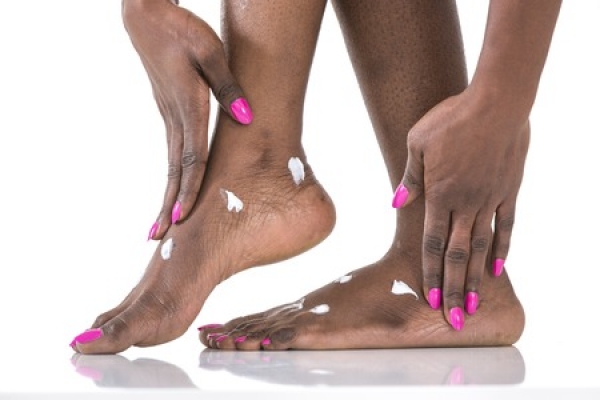At Superior Foot & Ankle Care Center, we recommend that our Douglas Park/Los Angeles County area patients inspect their feet regularly. One thing to look for is changes in the skin on your feet. There are several podiatric conditions that are related to the skin and, although seemingly minor, can develop into major medical issues if not treated promptly.
Here are some of the more common skin conditions we treat and what you can do to prevent them:
Sunburn—yes, even in the winter months if the temperatures are warm enough for you to wear open sandals and shoes that expose the skin on your feet, sunburn can occur. UV rays can quickly damage skin and lead to skin cancer. Always apply a broad-spectrum sunscreen with a minimum SPF of 30 if your feet will be in the sun. Carefully check the skin on your feet, including the spaces between your toes, for moles or freckles and contact our Long Beach office (562-420-9800) immediately if you notice changes.
Fungal Infection—athlete’s foot and other skin infections can cause skin to be red, dry and flaky and be accompanied by insanely irritating itching. Left untreated, a bacterial infection may also develop, and the initial infection can spread to toenails and other parts of the body. Your best protection from fungal infections is to keep feet from coming in contact with them by wearing shoes whenever you are in a public place. Don’t share shoes, emery boards, towels, or other items that touch someone else’s feet. If you get professional pedicures, be sure the salon you use follows proper sanitizing methods for footbaths and tools.
Blisters—these small, fluid-filled sacs that form as the result of friction between foot and footwear can have a big effect on your ability to walk because of the pain they can cause. The best way to prevent blisters is to ensure that your shoes fit properly and have no rough spots inside that rub on your feet. Friction can also occur if your feet are sweaty. Keep feet dry by applying a foot powder before putting on your shoes.
If you notice any unusual changes in the skin on your feet, let our podiatrists, Dr. Victoria M. Foley and Dr. Constance Ornelas, examine them and determine if there is a condition developing that requires treatment.

